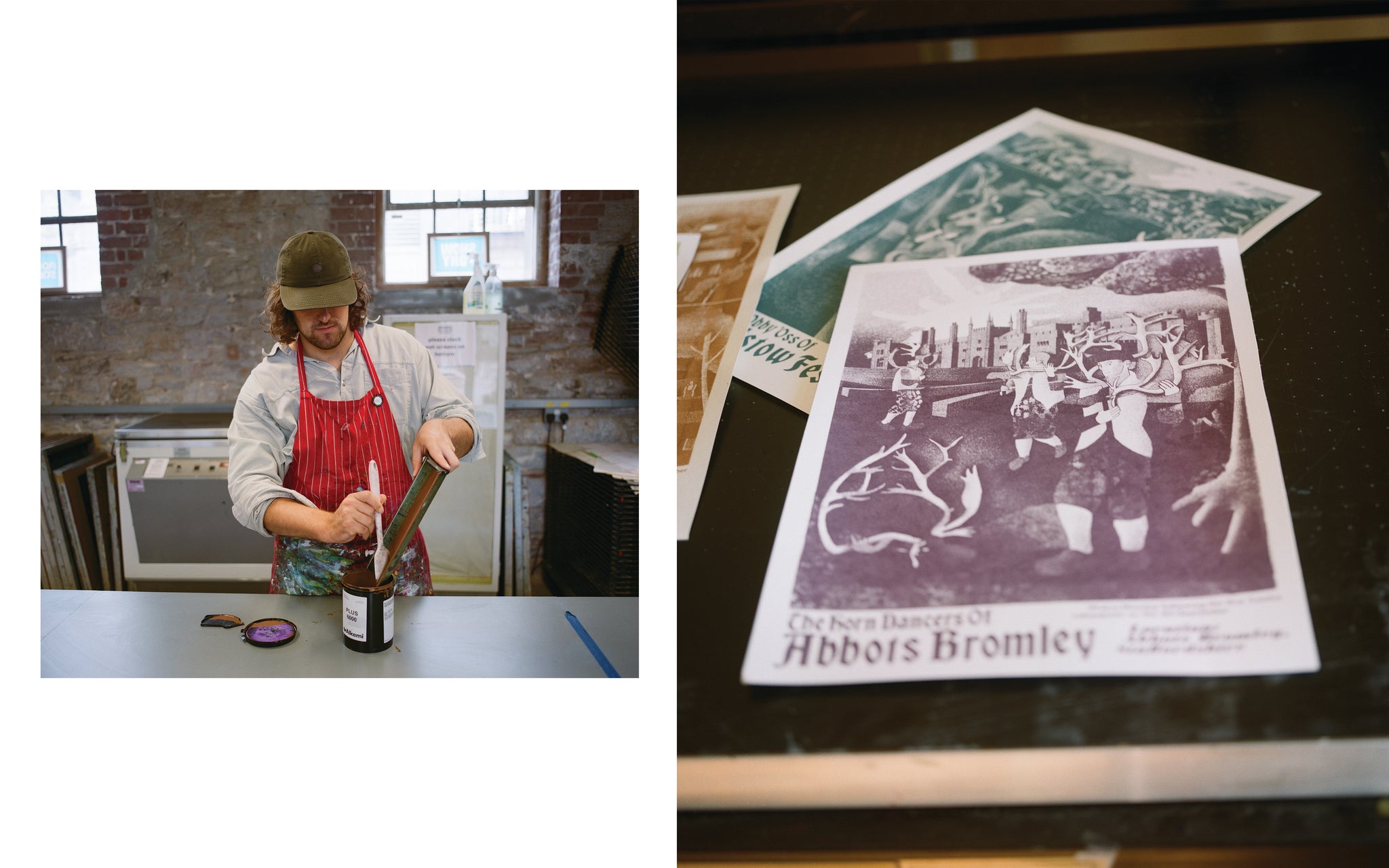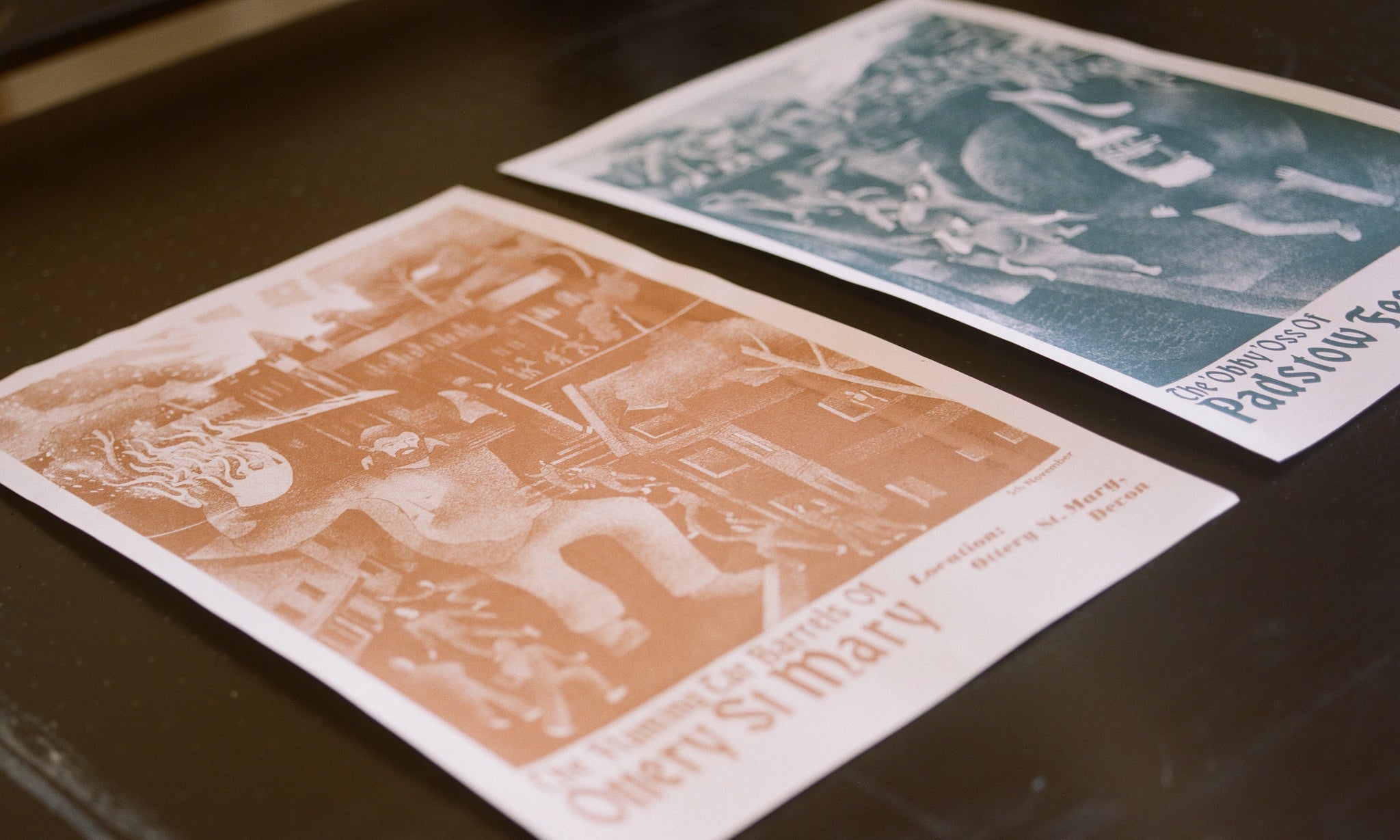Staying Creative with Tom Compton
This week we catch up Thomas WH Compton.
Tom is an Illustrator, Printmaker and designer from the UK, his practice combines both digital and analogue methods. We first worked with Tom back in 2020 as one of the finalists of our SCRT Art Comp, we've since caught up with him to dive deeper into our latest AW22 collaboration.
The newly released Gawain Set and Bertilak print take reference to the 14th century poem 'Sir Gawain and the Green Knight', using Toms's drawings to illustrate the tale.
Check out Toms's writing on the Green Knight below and why he thinks there is still meaning and value to be found in folktales.
Make sure to follow Tom on IG here and check out his website.



A year of waiting, and Sir Gawain prepares to seek the Green Knight.
“Whether fate be foul or fair, why falter or fear? What should one do but dare?”
Speaking before King Arthur’s court, Gawain resolves to face the challenge he has been tasked with seeming forthrightness. Beneath the guise of his confident pledge, Gawain is fearful, and for good reason. He faces confronting a supernatural being capable of bringing what King Arthur’s court believe is his certain death. Why does Gawain act undaunted for an audience who are aware he is fearful of death? A curious question.
The nephew of King Arthur, Sir Gawain acknowledges in his acceptance of the Green Knight’s challenge, “I am the weakest, the most wanting in wisdom, I know, And my life, if lost, would be least missed, truly. Only through your being my uncle, am I to be valued; No bounty but your blood in my body do I know.” Gawain falls the weakest and least experienced of the knights. A paragon of knightly virtue, it is upon Gawain to seek out a quest, a dare that would uphold him as a worthy and honourable knight, even at the prospect of death.
It is hard to not find resonance with Sir Gawain and his situation. I place myself in his shoes. He lies before a purposeful challenge, one that might bring a more confirmed understanding of self and where he fits into society. I think many people find themselves in this contemplative state at different points in their lives, unsure of direction, hoping to find meaning. The great appeal of this story, I find, is that despite being a poem from the 14th century, there is at its core the same human experience. It is in this that makes Gawain relatable. He encounters in his quest the burdens of existence and self awareness through encountered temptations and tests, and emerges tempered by his experiences, though perhaps not as he had expected to be.
The sustenance of folk stories such as Sir Gawain and the Green Knight are important. They point out meaningful social values that can be adopted for the positive affect of peaceable society. The same could be said of folk traditions, which form the basis of some new work I have been creating based on ‘Folklore Festivals of the British Isles’. These festivals provide an outlet for locality and communal values; to be entertained and to commemorate. They also serve as a fitting lens to ask poignant questions about social identity in a modern Britain. It is pointless searching for collective social identity in a society that is liable to change and impermanence. The inculcation of modern day customs are part and parcel of an evolving Britain, and will continue to be. Folk stories and festivals are a show of locality. If one looked at the nation as a fluid mesh of different localities, then the national identity is a reflection of these coming together, working as a whole. There is very much present the dual conception of identity when discussing Britain.
People often think in binary notions; wisdom and ignorance, life and death, local and national. Gawain started his quest seeking wisdom, but found that set notions of chivalry and honour meant little, becoming simultaneously wiser and more ignorant to the nature of the world. There is a lot of middle ground that comes within the parameters of definitions that life offers us, but what I do know is that creating work as an artist is one of the more joyful aspects of my life. I don’t work exclusively as an illustrator, designer or printmaker, and the path is not necessarily always clear cut. But this is what makes life exciting, balancing on the in-between. So as Gawain says “Whether fate be foul or fair, why falter or fear? What should one do but dare?”
Writing by Thomas WH Compton
Photography by Harry Compton - Instagram

